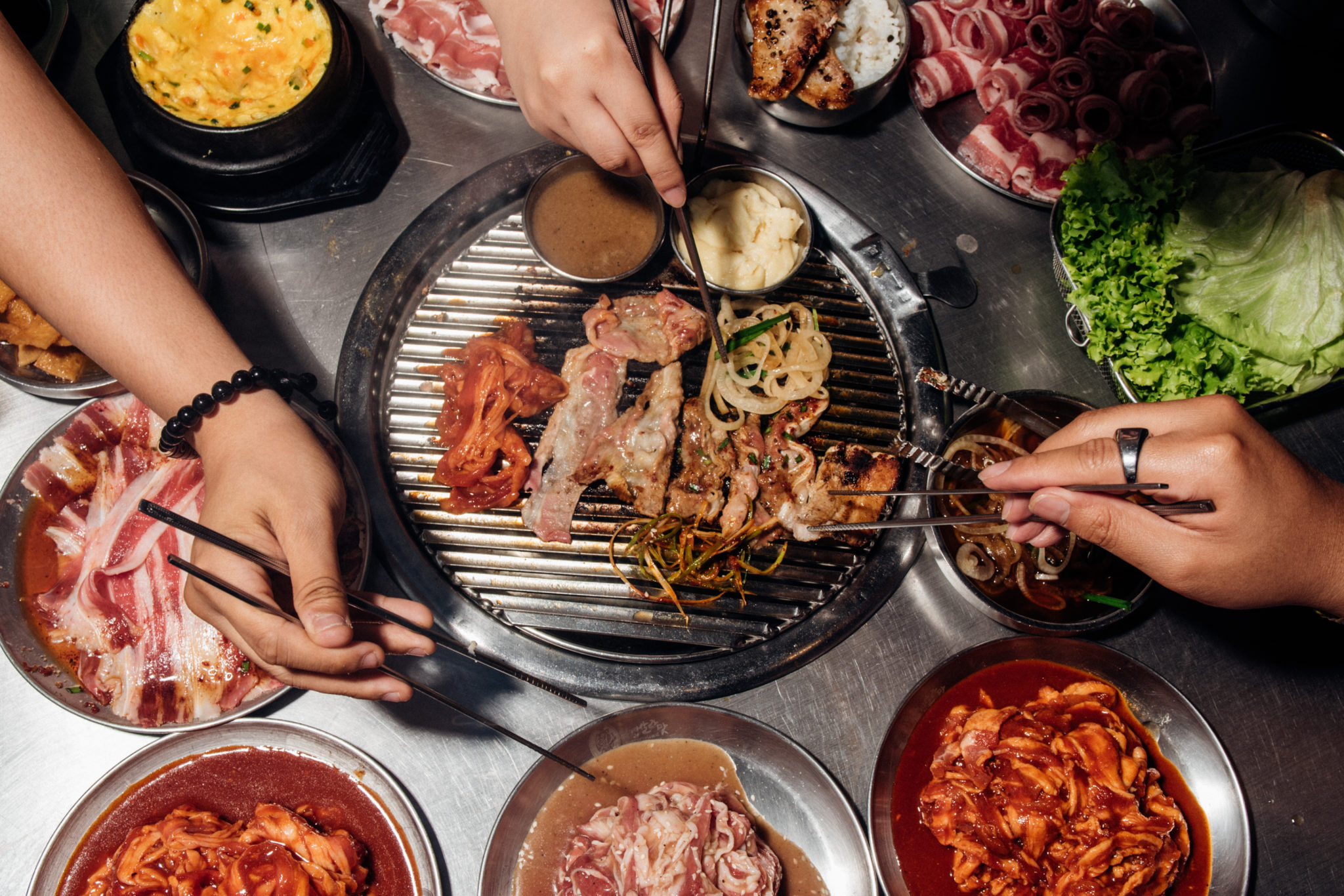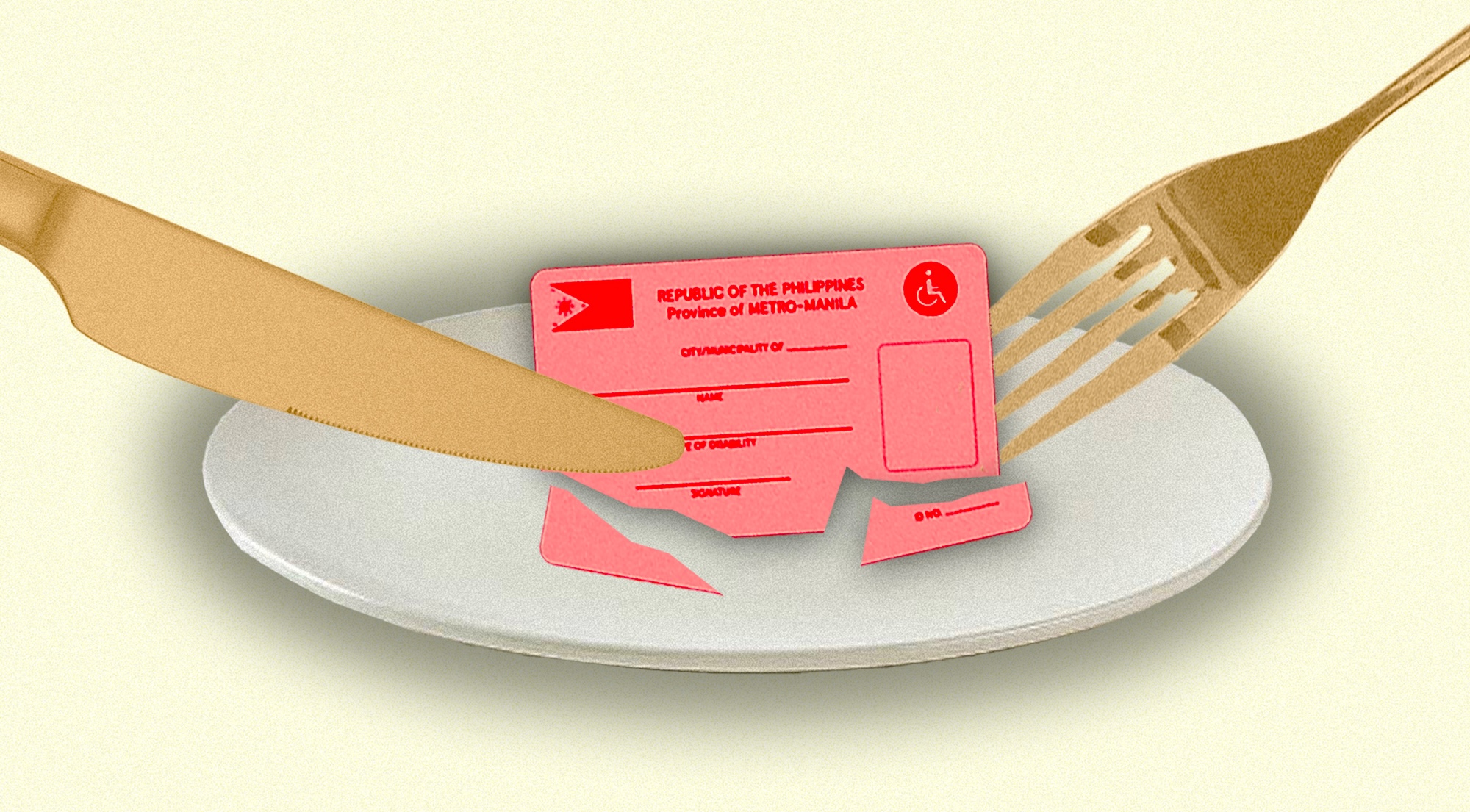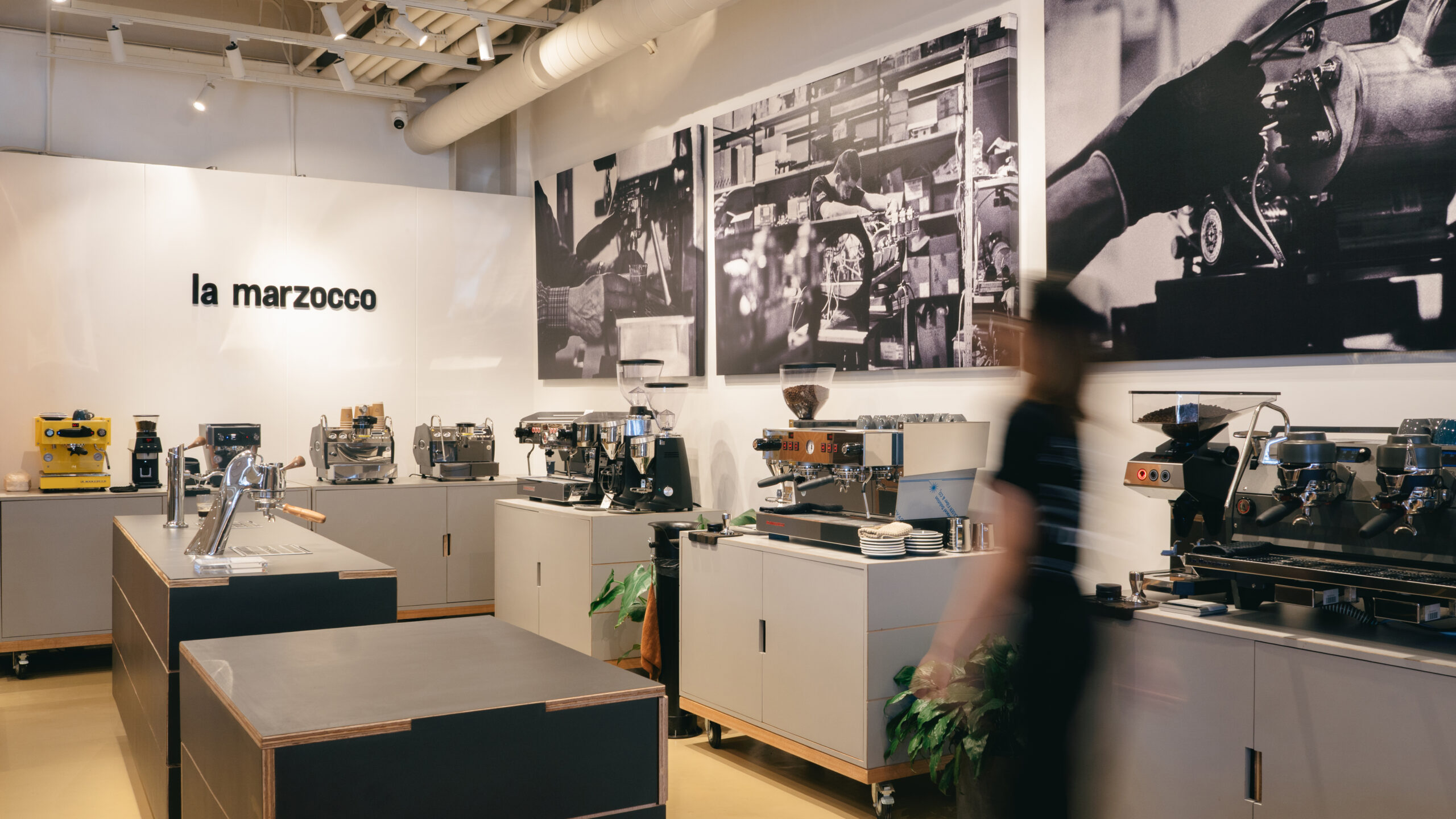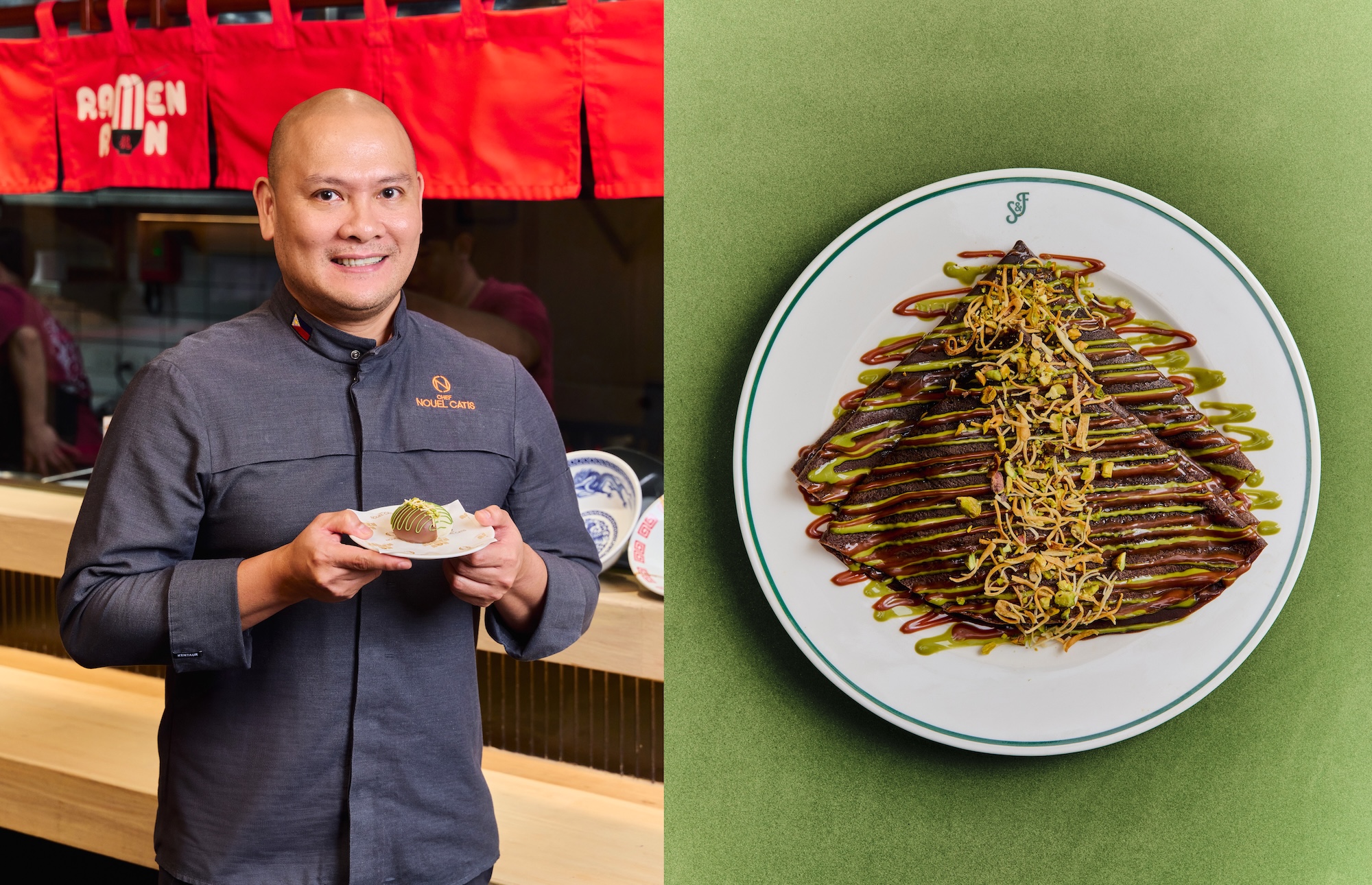The current refrain of many Filipino diners when asked about their current food of choice has been Korean barbecue or samgyeopsal, sometimes shortened to just “samgyup.”
Samgyeopsal continues to top lists of local food trends for more than a year already, with value for money being the major reason why diners prefer this style of dining. Second to this is the continuous fascination of Filipinos with all things Korean—not only K-pop, fashion, or skincare but also food, ranging from sweltering hot ramyun to colorful bowls of bibimbap.
Samgyeopsal actually translates to grilled pork belly. The proper term for Korean barbecue is gogi-gui, which involves cooking meat, usually pork, beef or chicken, on built-in gas or charcoal grills. Meat is usually eaten with grilled onions or garlic and wrapped in lettuce or perilla leaves. Side sauces include ssamjang (soy bean paste and chili gochujang) and gireumjang (sesame oil, salt, and pepper).
“It’s a very simple model to execute,” says Cyrus Cruz, a business strategist and restaurant consultant. “Filipinos’ love for chicken and pork is another reason why Korean barbecue is very popular. Plus, offering it at a reasonably low price and in unlimited portions adds to its overall appeal.”
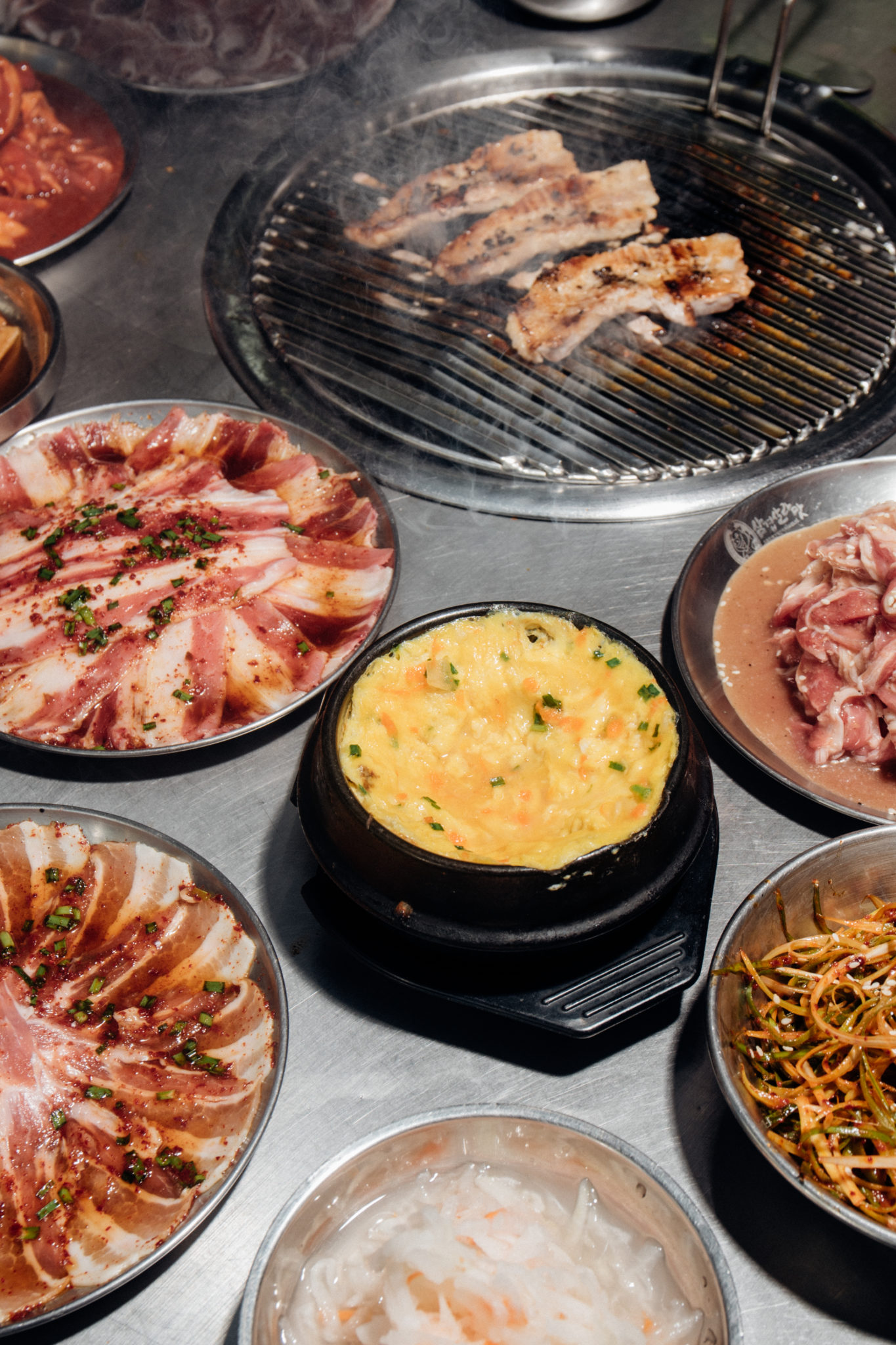
Best in (Korean) barbecue
One of the pioneers in the local market to maximize this model’s potential is Samgyupsalamat. In 2018 alone, the chain popped up everywhere, expanding to more than 20 company-owned branches around the metro and establishing itself in places no one would expect unlimited Korean barbecue.
Noticing the increase in popularity of the all-you-can-eat formula, especially abroad, Samgyupsalamat changed its model in 2017 from an a la carte Korean barbecue restaurant to one that offers unlimited meat.
So what exactly is at the core of Samgyupsalamat’s addictiveness? Marketing manager Mika Angela and Bonifacio Global City branch manager Gilbert Mondrial could share different reasons, but one sticks out the most: the quality of the meats.
“I’ve been to other Korean places before, and you can taste the quality of their meat right away. If the customer prefers high-quality meat, they’ll go here,” says Angela.
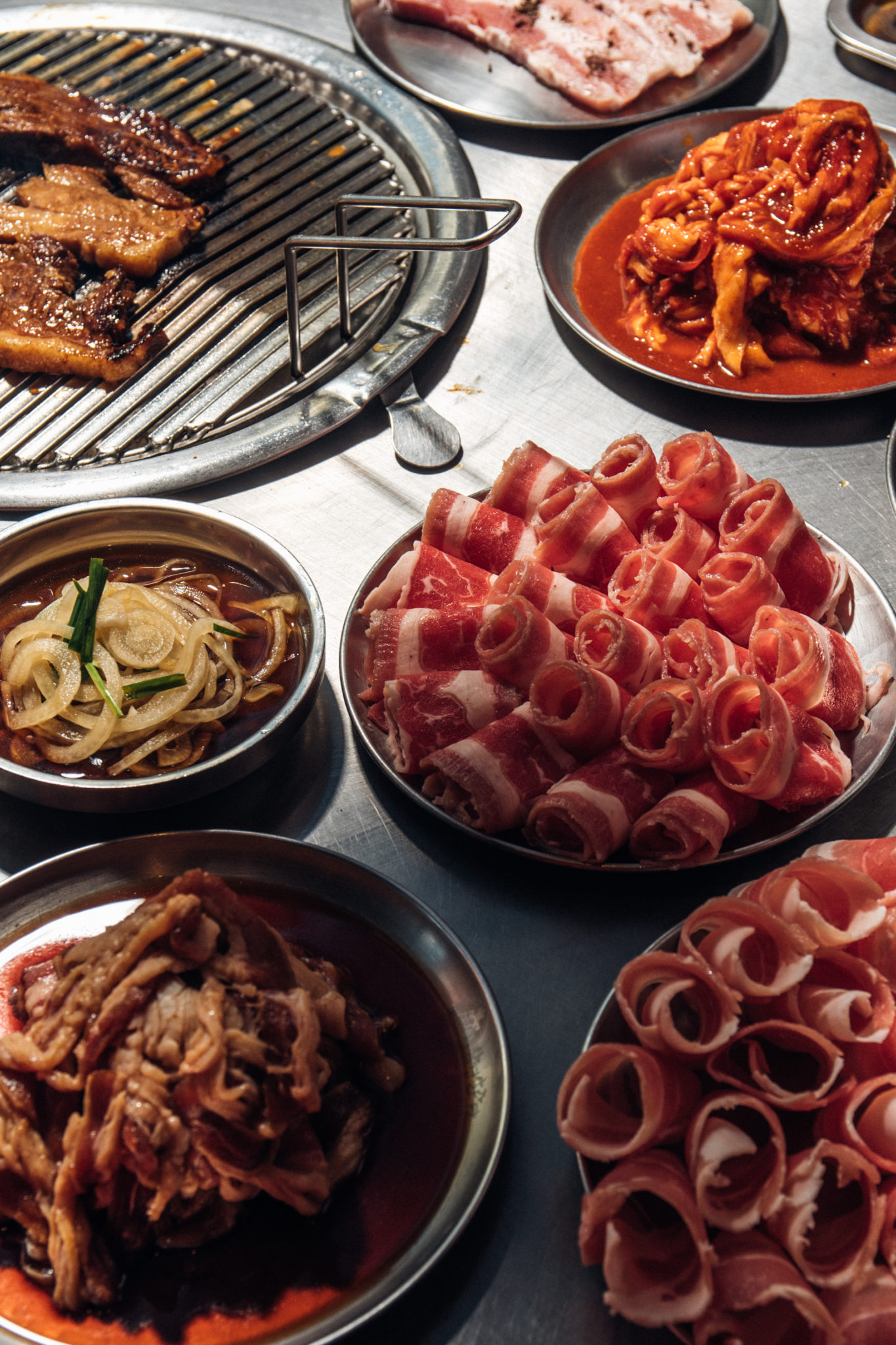
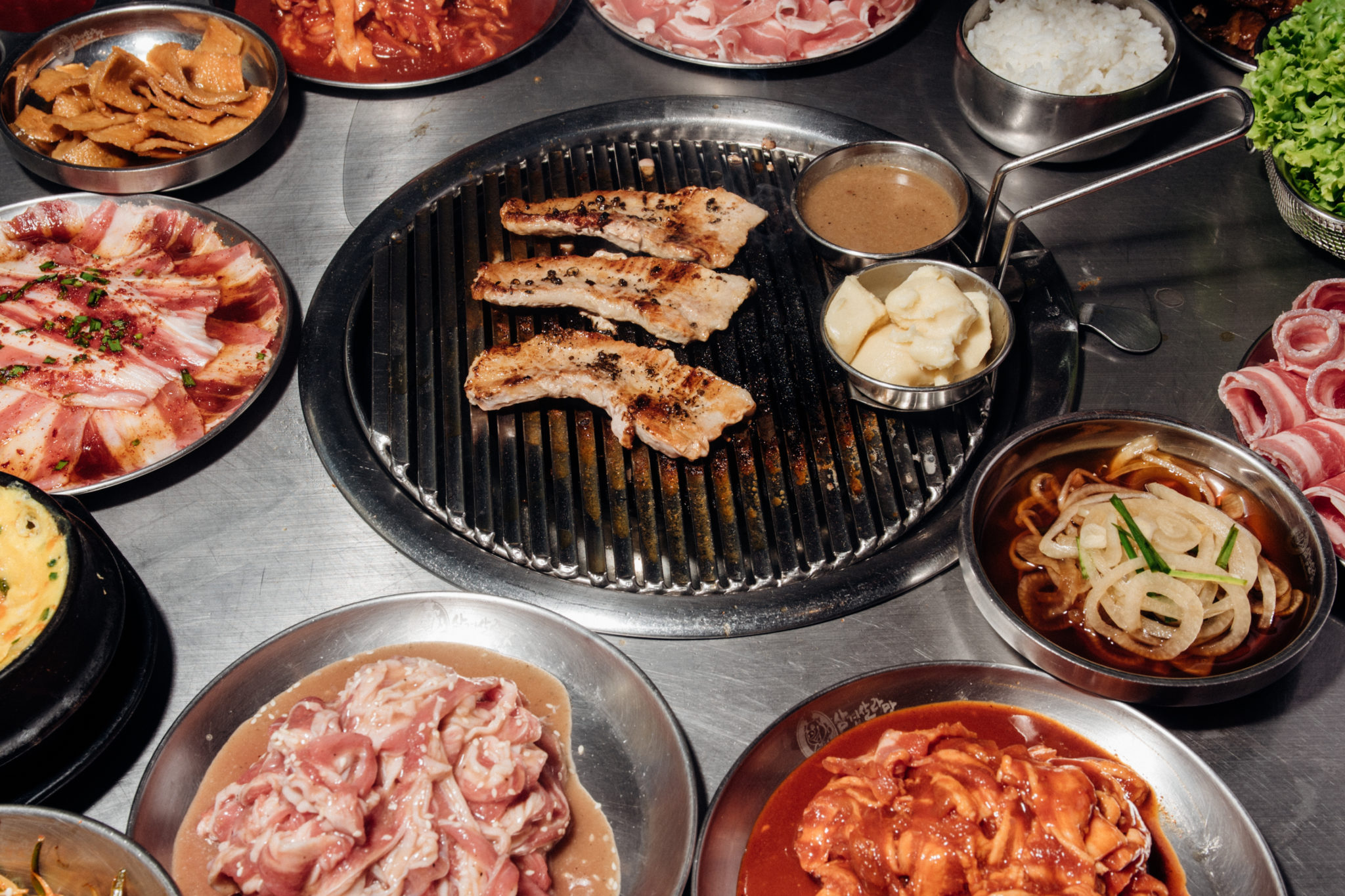
It also helps that the chain continues to innovate beyond the meat by giving the typical Samgyupsalamat fan reasons to keep coming back—like new products, from cuts of meat to sides, and reliable service.
Knowing that, you may wonder whether the restaurant can realistically keep going at this rate and survive. It’s not an unreasonable concern, as anything tagged with “unlimited” tends to be tricky in execution and open to abuse. It’s either a brand will eventually take back the unlimited deal, or sometimes it’s the one thing that may sink the brand if left unchecked.
Cutting costs
It’s worth noting how an all-you-can-eat restaurant works. “Most restaurants target a 28 to 32 percent food cost. Buffets have it slightly higher at 45 percent or sometimes it hits close to 50 percent,” says Cruz. The two most important elements to consider when opening an all-you-can-eat restaurant are the capacity of the dining room and the number of possible seat turnovers per meal. “For example, a table of four in a successful buffet restaurant must turn over at least two times per meal.”
Buffet restaurants save money from, among other things, not having to hire a full waitstaff when they let customers pick and choose their own food. While Korean barbecue places still need a crew, it does mean that they can make up for it by having fewer cooks.
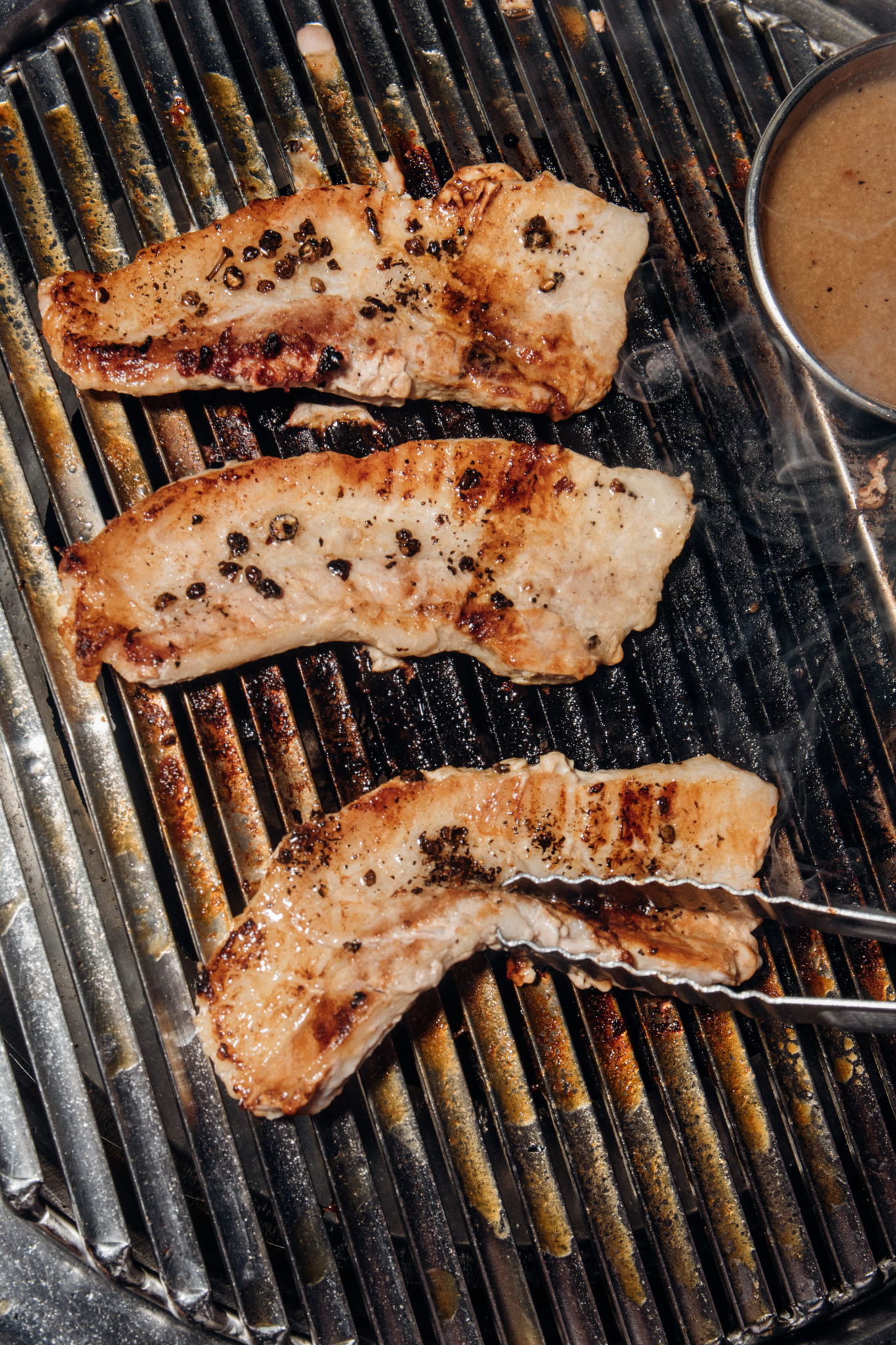
In theory, however, all successful smorgasbord businesses operate on one common backbone: Customers can’t—and usually won’t—consume more than they pay for. Studies have shown that buffet guests eat the same amount as they do when they eat at other restaurants, whether a la carte or otherwise. The average daily intake per meal does not go over one kilo, even if that quantity is distributed among three to five plates at buffets.
The two most important elements to consider when opening an all-you-can-eat restaurant are the capacity of the dining room and the number of possible seat turnovers per meal.
For Korean barbecue restaurants, this works on a per-table basis. When a table of four pays around P450 per person for a session of unlimited barbecue, the actual amount of food consumed collectively is still much less than actual food costs. Charging for leftovers is another strategy to keep costs low. This means tables take the initiative to avoid food waste out of fear of paying more. Consider also how ordering ingredients, especially meats, in bulk will help defray costs. An even more ideal model is if the enterprise is directly connected to a farm or piggery.
On top of that, tables will also be paying extra for other menu items, where restaurants can earn more profit, like a pitcher of iced tea or other add-ons—servings that would also fill up a customer easily and stop them from too much meat.
Low cost, high value
A typical main source of revenue for buffets is carbohydrates. “Rice, bread, pizza, and pasta,” says Cruz. “Whatever occupies the belly for the least amount of costs is always ideal.”
For unlimited Korean barbecue restaurants, what helps keep the revenue in check is the banchan or side dishes that accompany the grilled meats. This may include kimchi, sautéed greens, pickled vegetables, blanched sprouts, sweetened dilis, and rice—all low in cost yet can easily take up stomach space. The aim is to fill up a customer as quickly and as cheaply as possible, without compromising on quality, of course.
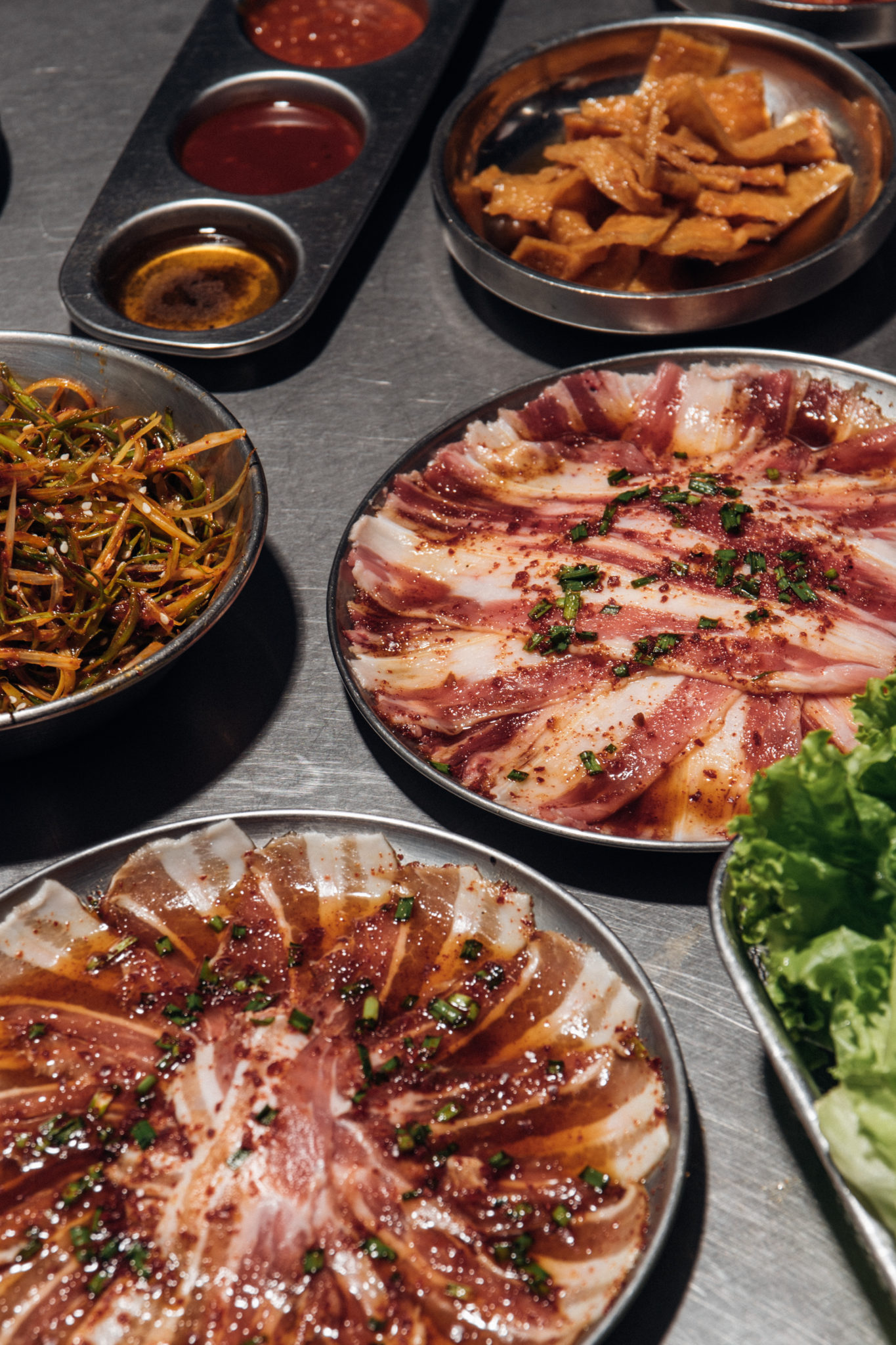
Other restaurants even offer unlimited spicy tofu soup, potato salad, roasted sweet potatoes, steamed egg, and DIY bibimbap to rectify the high cost of meats. Sometimes these items aren’t even Korean in origin. “I don’t think the Korean authenticity plays a vital role at all,” says Cruz. “Yes, by way of cooking a la table top makes it Korean. But that’s about it.” It works well for the restaurant just as much as for the customer who is looking for variety.
The queue helps in marketing the mere idea of eating as much as you can, and eating it for as long as you can. Undeniable is the Filipino trait of lining up wherever there’s a line, which is a major triumph for the business. The lines also defray costs since customers will be compelled to eat more starch and banchan, which are usually served first on the table before the meats.
Menu engineering is crucial. “A proper mix of high-cost items as well as low-cost, high-value offerings should come into play,” says Cruz. “For example, introducing all-you-can-drink in the product mix is one low-cost, high-value option. Bottomless Pale Pilsen is relatively low cost but has a perception of high value to guests. How much real estate it occupies in the belly is good for the business.”
Aim for volume
There’s no denying that all-you-can-eat restaurants require a lot of food to operate. That means they will spend a lot more on the food they are foreseeing people will order, and the only way they can turn a profit is when they get a lot of customers coming in.
“The only way for you to make money at this level of cost is through constant volume,” says Cruz. Fortunately, Samgyupsalamat knows exactly how to keep a steady stream of diners. That’s where the long lines come into play.
The queue helps in marketing the mere idea of eating as much as you can, and eating it for as long as you can. Undeniable is the Filipino trait of lining up wherever there’s a line, which is a major triumph for the business. The lines also defray costs since customers will be compelled to eat more starch and banchan, which are usually served first on the table before the meats.
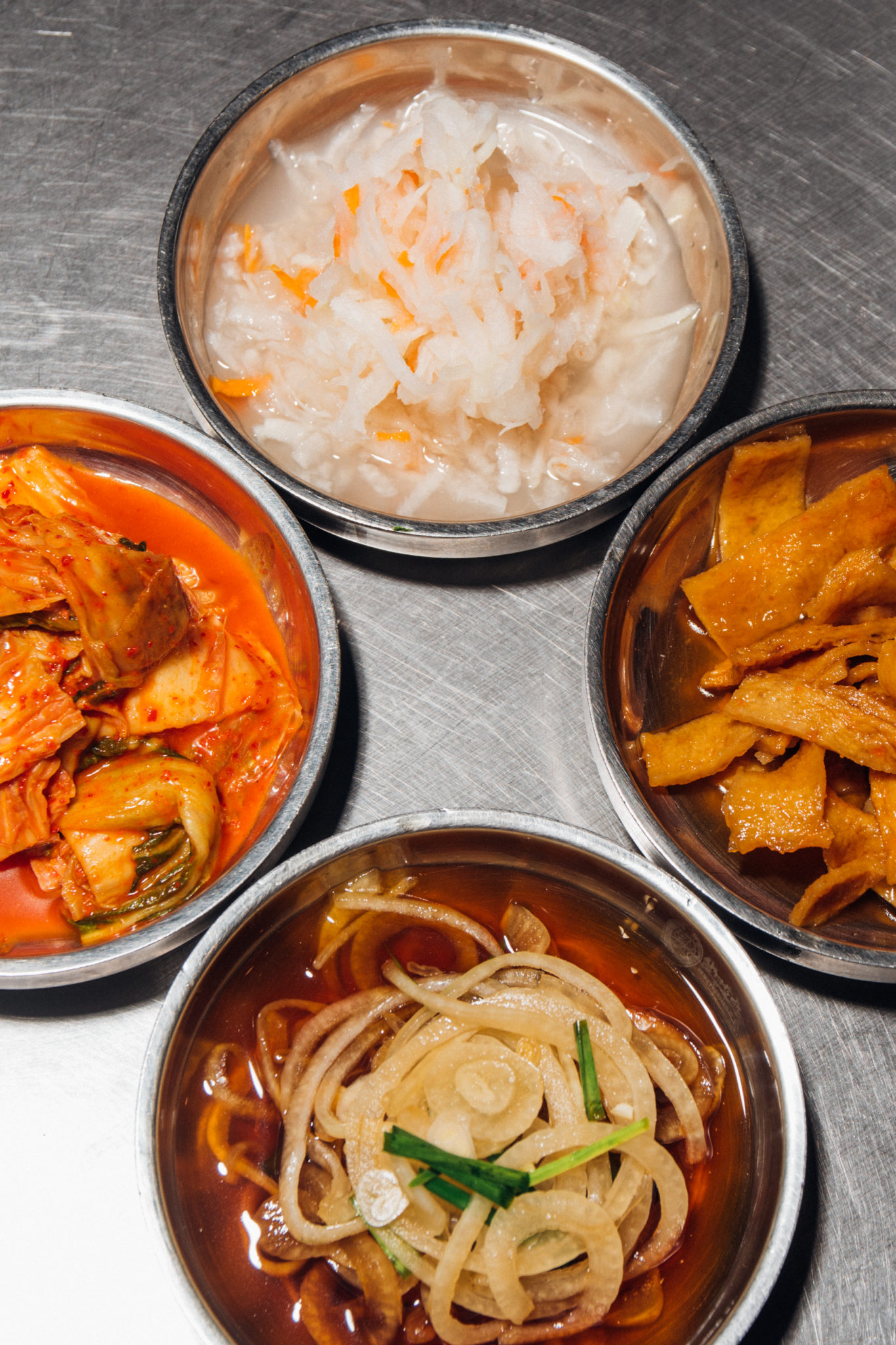
The experience and the food, once they’ve managed to get in, leave a positive impact on the customer, which then leads to them coming back to the restaurant in the future. Not to mention the word of mouth that spreads, netting exponential growth for the whole chain. These efforts should lead to volume.
“If you have a 100-seater restaurant, that’s open for lunch and dinner, it’s best to aim for 400 customers a day,” says Cruz. “If you don’t meet those numbers, you will lose money.”
“If you have a 100-seater restaurant, that’s open for lunch and dinner, it’s best to aim for 400 customers a day,” says Cruz. “If you don’t meet those numbers, you will lose money.”
The front of house has an essential role in this system. “Each seat should be treated like a hotel room,” adds Cruz. “The term ‘occupancy’ is used. This means that if you have a table for four, it’s best to fill that up with four customers and mark the table as 100 percent occupied.” If only three customers are given a table for four, that’s immediately just 75 percent occupied. If this is done often and at multiple tables, it adds up and eats up potential sales.
Unli power
The power of unlimited continues to sustain and contribute to the demand for the business model. “People just love unlimited,” says Mondrial of what he observes from their customers. “That’s what they want—to have unlimited because a la carte was more expensive [for the servings they were getting]. A la carte was really just different from unlimited—from the price to the amount of grams in the servings.”
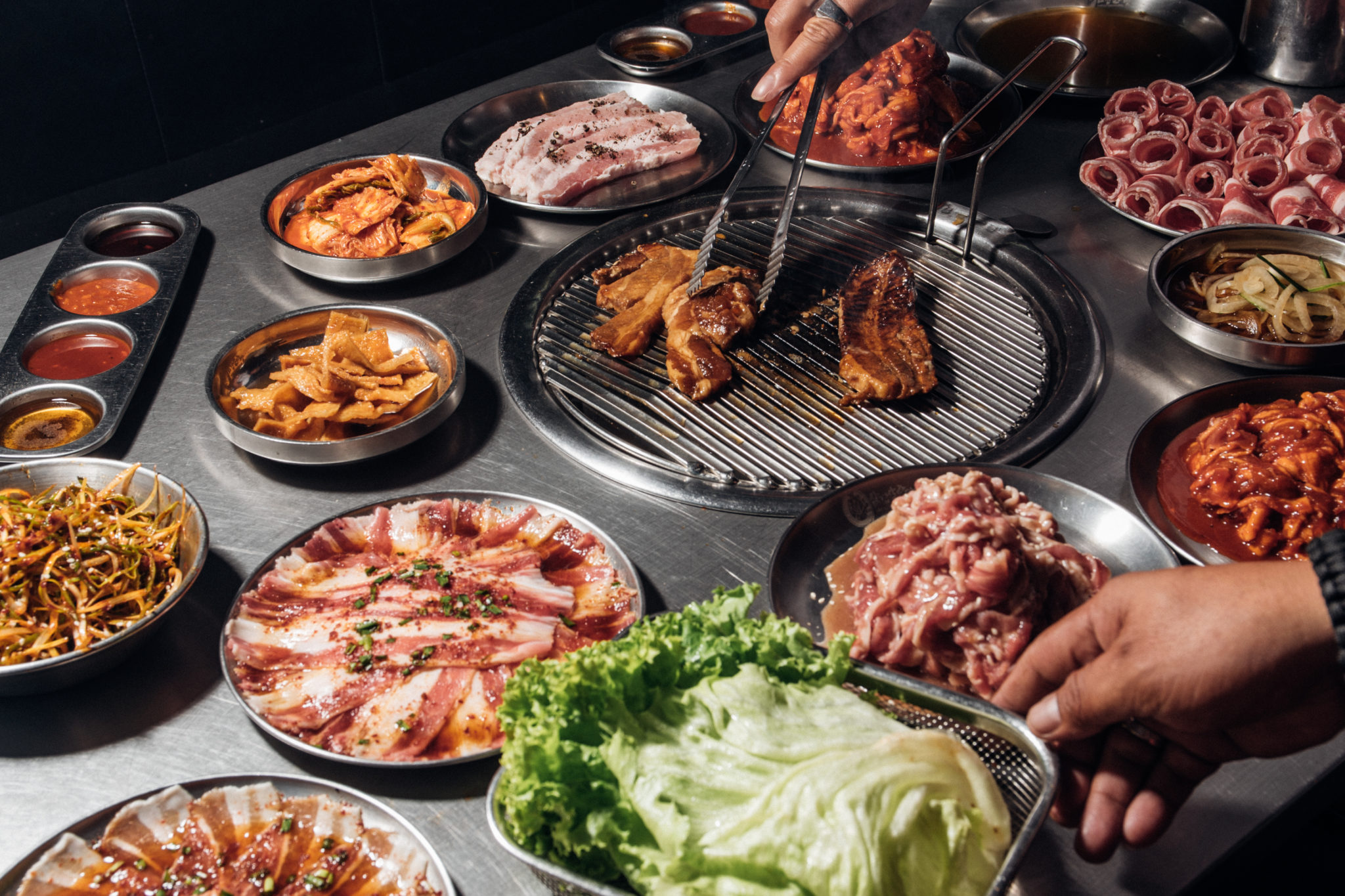
Mondrial adds that it’s also a matter of customer service and keeping them happy with more than just the food. “Our staff is good and moves fast. When our guests stand up and leave, we replace them with new customers easily. We even see some customers eat here every day.”
So with Korean barbecue restaurants having something much bigger than a mere moment, it’s safe to assume that it’ll be here for a while. Other restaurants could pull off what Samgyupsalamat does, in theory, but they would have to take some of the risks the chain does, such as no time limits and better quality meats.
Even with overwhelming hours-long lines and almost mob-like demand from groups of people who want to have as much barbecued meat as they can—consider these ideal for the business—many will still choose K-BBQ when you ask them where they want to eat.
Originally published in F&B Report Vol. 16 No. 1

